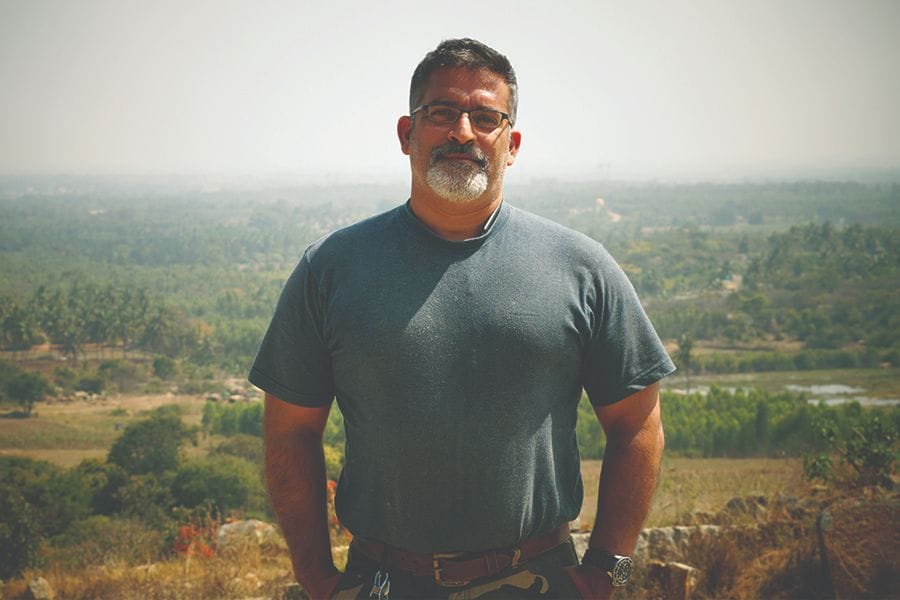New Delhi (India), November 16: In 2012, technology entrepreneur Rakesh Shukla bought agricultural land in the second driest part of the country. The district fell under the Eastern Dry Zone of Karnataka, where, at the time, rainfall was sparse, and temperatures went as high as 42 degrees in summer. Consequently, the landscape was rocky and arid, with no topsoil whatsoever.
This is where a lush green forest stands today with diverse native flora such as Peepal, Jamun, Gulmohar, Badam, Neem, Mango, Arjuna, Indian Cherry, Pongame Oil tree, and Guava trees. Flowering trees, including Rosy Trumpet, Gulmohar, Copperpod, Jacaranda, and African Tulip, provide habitat and foraging ground for a variety of pollinators such as bees and insects.
So, how exactly did a barren plot of land come alive with thousands of trees in less than ten years? The ride was definitely bumpy, but ultimately, dreams were fulfilled, and goals were met. Let’s find out how.
After purchasing the plot 11 years ago, Rakesh was trying to figure out what he should do with the land, but then, a fateful event occurred…Cookie came into his life.
Rakesh met Cookie, an abandoned paralysed Saint Bernard, at a time when every vet in town was of the opinion that she be put down. But Rakesh saw the light in Cookie’s large eyes and brought her home.
Unfortunately, Cookie’s doctors had failed to detect a deadly infection spreading in her uterus and left it untreated; in the end, she succumbed to pyometra and septicemia, leaving Rakesh agonized over the loss.
Separation from the beloved dog overwhelmed him in ways hitherto unimagined. In one such grief-laden moment, Rakesh had an epiphany: what if there was a way to immortalize Cookie? Why not grow a forest in her memory? Thus, the first tree Rakesh planted on his plot was a Banyan tree in Cookie’s name. As he started planting more trees, the first question to confront him was – how would trees flourish in the second driest part of India? Right off the bat, Rakesh started strategizing ways to sustainably manage the water resource. Rain-water harvesting methods that include collecting, storing, conveying, and purifying runoff for subsequent reuse were promptly deployed.
Firstly, a 100-year-old stepwell, which already existed on the plot, was rejuvenated and was used to store rainwater. Then, a large reservoir was dug up to collect runaway water from a nearby hill, and another sump was built to treat blackwater. The amassed rainwater was used for domestic purposes, and the saplings were irrigated with purified grey and sewage water.
Since there was enough water to meet the daily needs at the farm, more saplings were planted, and surplus water was used to nurture them. A conscious decision was made to plant trees native to the region because they have better chances of survival, can withstand local weather conditions, require less water, and are drought-resistant. Moreover, native plants offer ideal habitat to a variety of micro and macro fauna.
On some parts of the land, Rakesh’s team utilized the Miyawaki approach for afforestation, which enables trees to grow ten times faster. The method entails growing several native plant species, with an average density of 3 saplings per square metre.
Unfortunately, very poor rainfall was witnessed in 2018; the following year, all plantation initiatives came to a screeching halt as Karnataka experienced a full-blown drought. The land was parched, the well and ponds dried out completely; there was no water left to run the sanctuary. Rakesh had to resort to buying water for several months to keep things going.
A lasting solution was the need of the hour; although there was only a 40% chance of striking water in this region, Rakesh decided to dig a borewell. The gamble paid off, and in one golden moment, water came gushing out from a depth of 1,600 feet.
Then, in a very favorable turn of events, rains came, ending three years of dry spell. The drought years taught everyone the real value of water, so steps were taken to preserve every drop. The sanctuary staff became very discreet with usage; ponds were concretised to prevent horizontal seepage and evaporation, and the stepwell was desilted and cleaned over three months.
Once again, plantation work was resumed. Even this time, only slow-growing indigenous trees, which were better adapted to local conditions, were handpicked and reared.
As the trees grew bigger, various species of wildlife, insects, and birds slowly began making inroads into the land. Peacocks, Bonnet Macaques, Catfish, Jezebel Butterflies, Honeybees, Antlions, Assassin Bugs, and avians such as the Indian White Eye, Cattle Egret, Red-vented Bulbul, White Browed Wagtail, Common Hoopoe all make homes in the forest. Today, 30 species of birds, amphibians, reptiles, rodents, and insects live in this biodiverse ecological zone.
“Sadly, exotic trees like ‘the Eucalyptus’ are being grown in these areas for economic reasons. They have no ecological benefits and are degrading habitats and depleting groundwater. We only planted the local varieties, and ours is the only green patch with endemic species in the whole area,” said Rakesh.
The forest cover has brought with it multiple bounties, the first of them being the rising of the groundwater table from 1600 feet to 680 feet. The vast network of interwoven tree roots has prevented the soil from eroding, and the mulch from the dead leaves and cow dung has improved the quality of topsoil, further promoting plant growth.
“I wanted life and beauty to flourish on our farm. I dreamed of my dogs and me living the quiet life of ascetics in a dense forest. The dream did come true; despite all odds, today, we live in a forest and have a perennial supply of water.”
Everyone at the sanctuary has grown to love the trees, and Rakesh is fiercely protective of them, “No live trees have ever been chopped down on our farm. All newer dog enclosures have been designed to safeguard the existing trees”.
For more details, please visit – https://www.youtube.com/watch?v=wNK0amaeL5Y&t=115s





